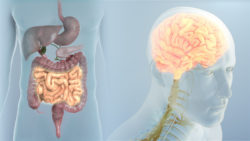In the modern arena that keeps patient-education in the center, we get to see medical video clips commonly in doctor’s offices, hospitals and even on television shows. These animations can even be tailored to the need of the intended audience- be it the highly educated medical professionals, or a simple average patient with no advanced knowledge.
But medical animations weren’t always around. The urge to depict, and thus better understand the body, accompanied by advancement in technology, has paved the path of evolution of what we call today ‘Medical Animation’
- 1894: Max Brodel, enrolled in John Hopkins School of Medicine, Baltimore, created illustrations for Harvey Cushing and other renowned clinicians. He is also credited with the invention of new techniques like ‘carbon dust’ for creating marvelous illustrations. For this reason, Max Brodel is known as the Father of Modern Medical Illustrations.
Although medical animation evolved from the field of realistic medical illustrations, it is equally indebted to motion picture technology and computer-generated imagery. Carbon dust and cadavers were soon replaced by 3D renders and endoscopic cameras.
- The term ‘medical animation’ predates the advent of computer-generated graphics by approximately 3 decades. In fact, it first appeared in scholarly contexts as early as 1932 in the Journal of Biological Photography.
- Pauline Lariviere, in 1940, had unique style of representing the human anatomy and its parts in healthy, vibrant colors.
- William Fetter developed medical illustrations in 1960. He worked on computer-generated, orthographic view of the human form and coined the term ‘computer graphics’. In the same year, Ivan Sutherland demonstrated the concept of graphical computing.
- The first computer animation was created at Bell Telephone Labs in 1963. However, the first description of the use of 3D computer graphics for medical purpose came much later and can be found in the 1975 dated issue of the journal ‘Science’.
Early medical animations were limited to basic wire-frame models because of low processor speed. With evolution of microprocessor design and computer memory, animations have become significantly more intricate.
- 1980 onwards: Medical animations had become a distinct approach of physiological and surgical instruction. By that point, researchers had suggested that the 3D medical animations could illustrate physiological, molecular or anatomical concepts that might otherwise be infeasible.
Modern Presentation Practices
Unlike the traditional means of marketing that comprised poster presentations, usually featuring hard copies of research studies, and simple visual aids like blackboard and whiteboard; healthcare marketing has now evolved into presenting through sophisticated software programs such as MS Powerpoint, and electronic posters with integrated medical animation. Watch this space for more insights into the field of medical animation and how it impacts healthcare marketing.

Medical Animation infuses ‘Creativity’ in Healthcare Marketing
Creativity is not just an ingredient of great branding, but also a key part of the overall process; it is reflected in the way challenges are approached and the target audience is reached. Most memorable healthcare marketing campaigns are those that help improve understanding of patients’ suffering... Read More..

How 3D Medical Animation Benefits Medical Device Startups?
As more is discovered about the human body, there’s an increasing need to convey those discoveries effectively. A 3D medical animation is an ideal way to fulfill that need. For a medical device startup company in its initial phase, that relies on heavy promotion and advertisement to get noticed by its audience, Read More..








